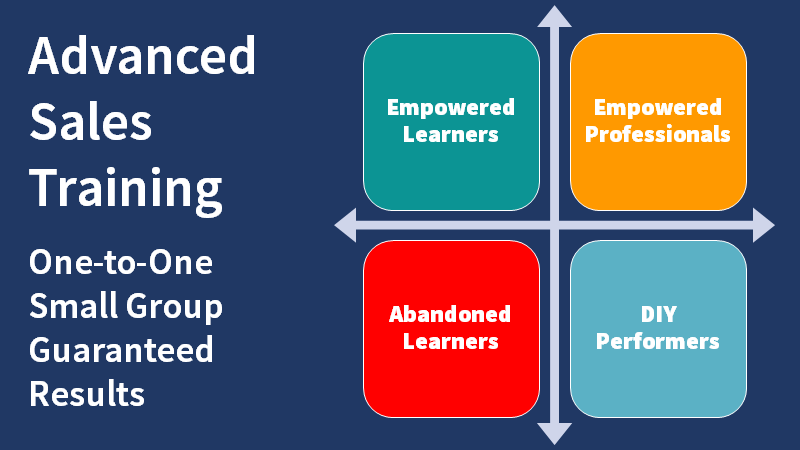Use combined experience and brainpower to create a business turnaround strategy.

It’s always someone else’s job to fix what’s wrong. Things that can be easily improved in a business are often so rooted in habit that they become tolerated and even ignored. Drawing on improvement ideas and collective thinking can produce a business turnaround strategy.
Solve Sales Problems
A periodic review meeting to solve sales problems, generate sales improvement momentum, or develop strategy, has a significant impact on business success.
Use the Get to Great system designed by Chris Whyatt with the following steps:
Start with a series of headings that describe critical success factors associated with the sales or marketing operation or the problems being experienced. For sales, you might include, sales prospecting, account management, sales call planning, and so on . . .
Next, for each heading, describe the ideal capability of the organisation. Any organisation that conformed to this statement could be considered to be the best they could possibly be, for instance, relating to lead generation, 'Marketing generates more qualified leads and enquiries than are needed for sales targets to be met.'
In the ‘Get to Great’ system this would be known as the 100% answer and represents perfection.
Since what is meant by ‘qualified lead’ and what is considered by sales to be ‘enough’ may not be defined, this statement alone might generate a lot of healthy debate amongst sales and marketing managers.
If a management team could agree that this statement was true for their operation, then it could be said that the business was as good as it could possibly be in this respect. Perfection is hard to attain. This is likely to be a rare circumstance.
If we were to define merely ‘good performance’ the compliance statement might read: “Marketing generates enough qualified leads and enquiries to make a worthwhile contribution to sales success”.
In the ‘Get to Great’ system this would be known as the 75% answer and represents top quartile performance.
Once again we have a resolvable difficulty with the definition of terms. Ideally, the terms ‘qualified’ and ‘worthwhile’ need defining for a management team to reach a compliance consensus.
The most common reality might be represented by this statement: 'Marketing generates some useful leads and enquiries on a sporadic basis. Consequently, sales cannot rely on marketing-generated interest to ensure a steady flow of sales opportunities.'
In the ‘Get to Great’ system this would be known as the 50% answer. It represents the average or most commonly found circumstances for the heading. The statement should more or less reflect the norm.
A less acceptable description of circumstances could be: 'Marketing occasionally generates useful leads or enquiries. These are considered lucky occurrences by the sales team.'
In the ‘Get to Great’ system this would be known as the 25% answer. This acknowledges inferior performance. Or worse still: 'No one can remember the last time a marketing-generated lead or enquiry was turned into a sale.' In the ‘Get to Great’ system this is known as the 0% answer. The potential for improvement is total.
Use a Structured Assessment
Develop your own classifications for a set of headings that are relevant to your team and then present the classifications in the next management meeting.
Try some of our gap assessments for inspiration;
- SDR - BDR - Telesales
- Professional Sales Skills and Habits
- Sales Knowledge Assessment
- Sales Win Predictor
- Sales Management and Leadership
- Sales Motivation
- Sales Organisation and Operation
- Marketing Plan Assessment
- Sales and Marketing Alignment Assessment
- Sales Enablement Assessment
- Test Any Plan
- Presentation and Public Speaking Skills
- Sales Trainer Skills
Alternatively, ask us to develop an assessment for you. We already have a few ready-to-go assessments built for our Facilitated Enquiry service. One or more may be suitable for your business.
Ask everyone to select the statement that they believe to be the most accurate. Then try to get a consensus on the answer. If you can’t get a consensus, make sure that everyone has had a chance to express their opinion and then accept the majority rating to keep things moving forward.
Next pose the question, “As an organisation, is this conclusion acceptable or should we commit to addressing the sales problems it exposes?”
If necessary, allow some more debate. If the conclusion is that it must be improved, harness the combined thought power of the team to identify the necessary actions.
Take care to ensure that the resulting actions don’t all land on the same plate. Ensure that the work is evenly distributed.
Once the actions and responsibilities are defined, have the team agree on time scales and add a review to the agenda of appropriate future meetings.
If the process is facilitated well, the outcome should be a very satisfying set of agreed, time-tabled, and committed actions for improvement.
If you do this in a routine meeting, you may find it takes up too much time. This will be especially true if you attempt to review five to ten critical performance headings related to the business performance of the organisation. Instead, set aside a two-day offsite meeting to make use of this process. Alternatively, schedule a series of Zoom or Teams calls. The process is a business turnaround strategy.
The same process can be conducted at a department or team level, providing that the headings are kept within the bounds of each team's collective ability to act.
Assign Key Roles
It may be that you can use this business turnaround process to improve any function in your organisation without outside support; however, there are a few pitfalls and obstacles that often defeat the best intentions.
- Someone has to craft the statements. When this is a member of the team or the team leader, that person often feels he or she must defend the statements. When someone feels threatened by a statement, and this is often the case, whoever wrote it comes under fire. For this reason alone, it is worth having an outsider conduct a consultation with appropriate managers, construct the assessment statements, and then facilitate the meeting.
- The team leader needs to be free to fully participate in the discussion and depending on judgement and perspective, influence proceedings. As a consequence is it impossible for him or her to be seen as neutral. For the process to realise its full potential, a neutral professional facilitator is necessary.
- In the ‘Action Identification’ phase, an independent facilitator can introduce ‘best practice’ ideas and share the experiences of others without provoking the same degree of competitive reaction between members of the team.
Business Turnaround Strategy
Whether you are facing a crisis and need a business turnaround strategy or simply a way to have your whole team work together to solve problems, The Get to Great process delivers results. If you need a facilitator, we can help. use our facilitated enquiry service to make it happen.
Article by Clive Miller
If you need to fix sales problems, prepare sales improvement plans, or develop a business turnaround strategy, get in touch. Telephone +44 (0)1392 851500. We will be pleased to discuss your needs or talk through some options. Alternatively, Send an email to custserv@salessense.co.uk for a prompt reply or use the contact form here.












